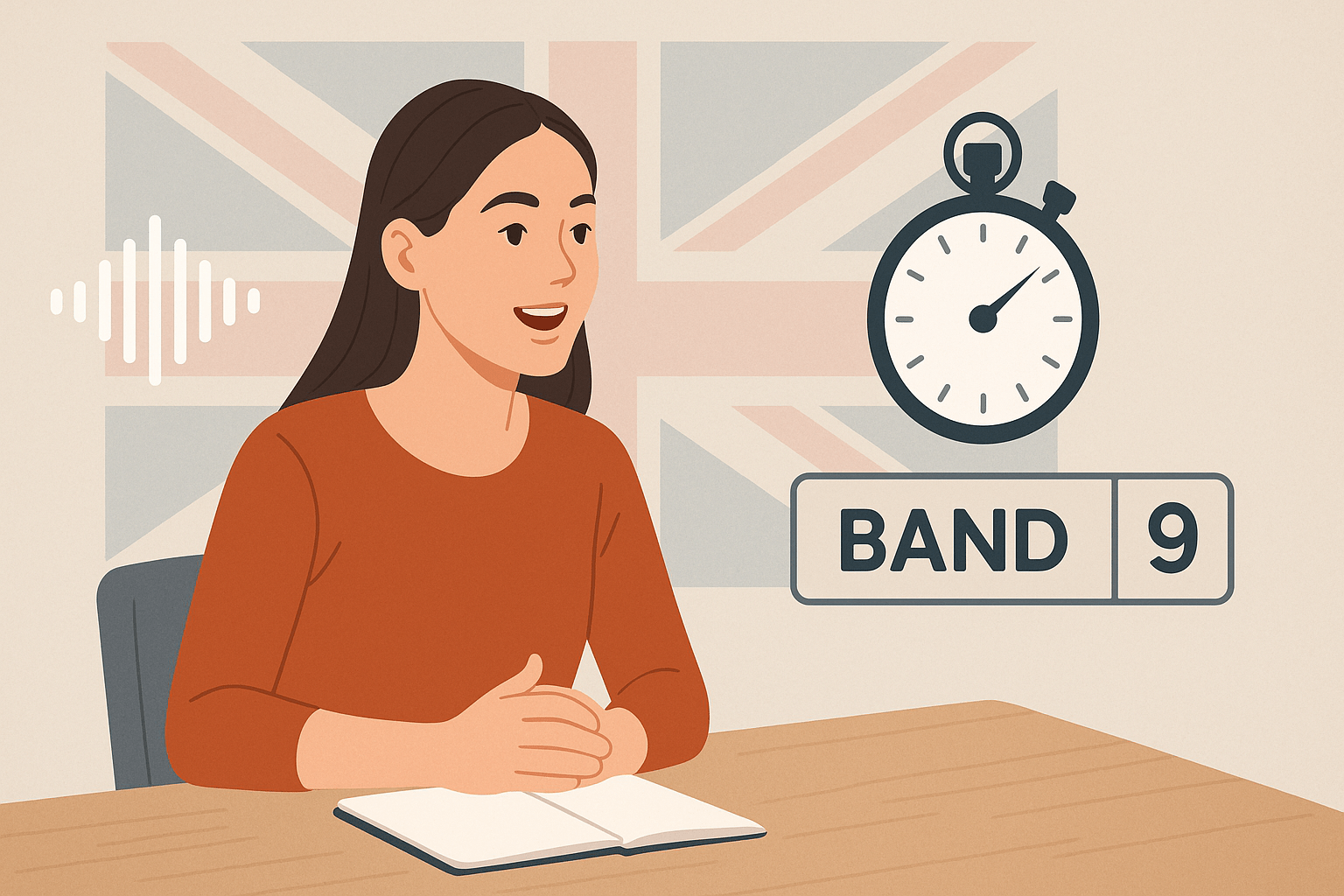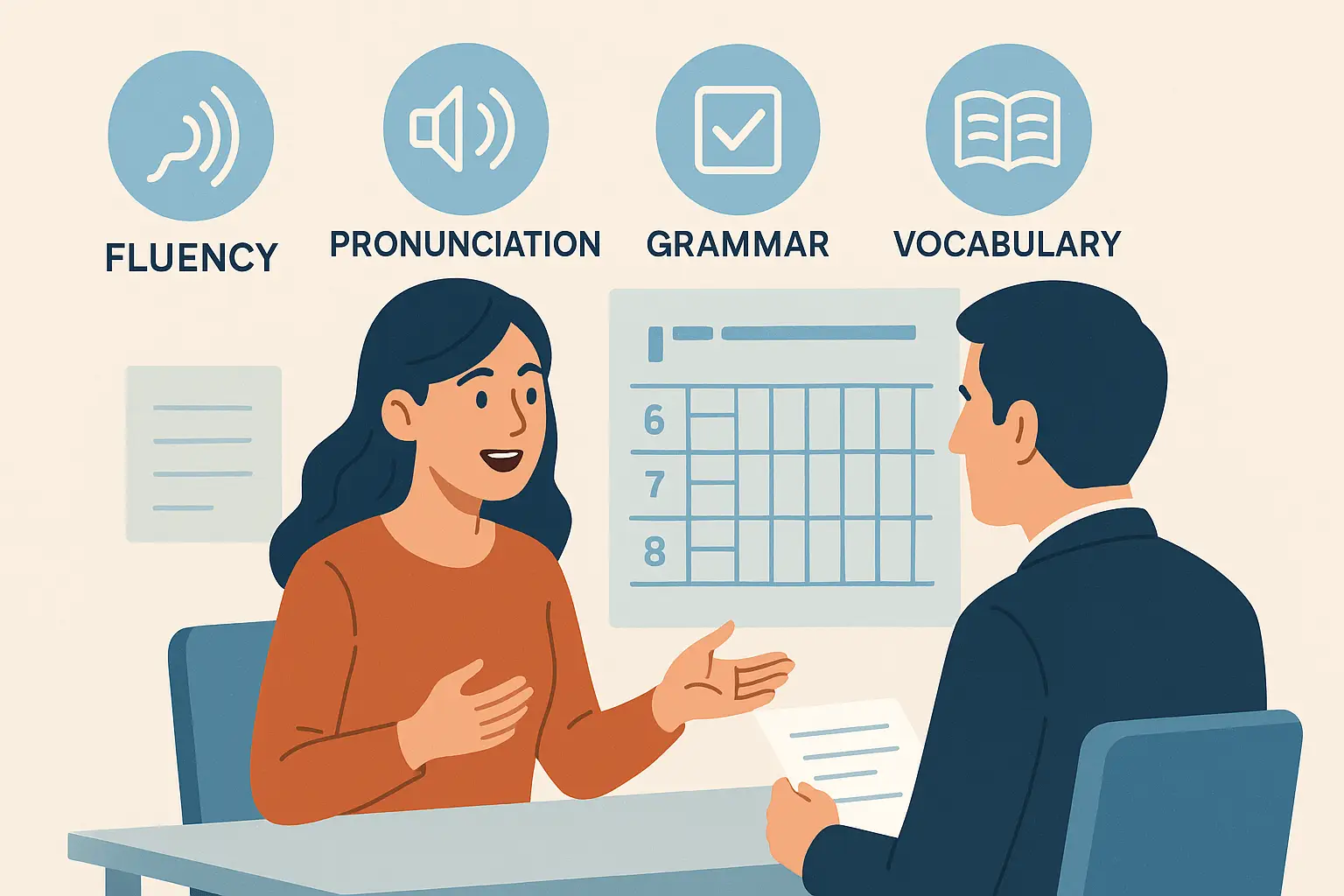- Why Pronunciation and Fluency Matter More Than You Think
- The Real Problems My Students Face — And How We Solve Them
- Proven Techniques to Improve Your Fluency
- How to Fix Your Pronunciation the Smart Way
- Tools I Use with My Students
- Final Thoughts: Don’t Let Fluency or Pronunciation Limit You
- FAQ – IELTS Speaking Pronunciation and Fluency
As an international IELTS teacher helping students across the globe, I’ve seen many learners struggle with IELTS Speaking Pronunciation and Fluency — especially when they speak confidently but still sound “unnatural” or “unclear” to the examiner. From muffled intonation to robotic pacing, these issues often hold them back from achieving the Band 7, 8, or even 9 they deserve.
In this guide, I’ll break down practical, proven strategies I’ve used with students to master pronunciation and fluency — the two key ingredients that can transform your speaking score and overall communication confidence.
Why Pronunciation and Fluency Matter More Than You Think
Many students assume grammar or vocabulary is the most important part of speaking. While those are essential, poor pronunciation and unnatural fluency instantly affect clarity — making it hard for the examiner to follow your ideas, even if your grammar is perfect.
Pronunciation doesn’t mean sounding British or American. It’s about being understood clearly. And fluency doesn’t mean speaking fast — it’s about speaking naturally, without long pauses or unnatural rhythm.
According to the official IELTS Speaking Band Descriptors, both pronunciation and fluency contribute 50% of your overall Speaking score. That’s why mastering these two areas is non-negotiable if you’re aiming for a high band.
The Real Problems My Students Face — And How We Solve Them
Over the years, I’ve worked with thousands of students. Here are three of the most common issues I’ve helped them overcome:
1. Choppy, Robotic Speaking Style
Many students memorise responses or pause too long between words. It sounds unnatural and affects their fluency score.
Solution: I guide them through shadowing exercises — where they repeat after native speakers in real time. This builds rhythm, natural phrasing, and confidence.
2. Flat or Unclear Intonation
Some learners speak in a monotone or don’t stress important words, making it hard to follow their ideas.
Solution: I use sentence-stress drills. We practise how stress, pitch, and intonation patterns change meaning — especially in Part 2 and 3 responses.
3. Mispronounced or Confused Sounds
Sounds like /r/ vs /l/, or word endings like –ed and –s often confuse learners. These small mistakes add up.
Solution: We isolate and practise problem sounds using minimal pairs, recordings, and IPA tools. I also encourage recording and comparing their speech daily.
Proven Techniques to Improve Your Fluency
Improving fluency doesn’t mean rushing your words. It means thinking and speaking at the same time — and making that process smoother.
Here’s what I recommend:
- Think in English: Avoid translating from your native language. Instead, describe pictures or explain ideas aloud daily — even for just 5 minutes.
- Use Speaking Prompts: Practice with cue cards and sample questions. For example, try a 2-minute response about “a memorable journey” and record yourself.
- Focus on Connectors: Use linking words like “however,” “in fact,” and “as a result” to build flow. This boosts fluency and cohesion.
- Take Mock Tests Weekly: Use platforms like British Council or IDP to simulate the real exam.
You’ll also find a full set of strategies and examples in our complete IELTS Speaking guide, which breaks down all three Speaking parts in detail.
How to Fix Your Pronunciation the Smart Way
You don’t need to “perfect” your accent. You do need to make sure your words are pronounced clearly and naturally. Here’s how to get there:
- Record Yourself Daily: Use your phone to answer speaking questions. Then compare your speech with model answers.
- Learn with Sound Symbols: Use tools like the IPA chart to understand English sounds. For example, learn the difference between /iː/ (“sheep”) and /ɪ/ (“ship”).
- Practice Word Stress: Incorrect stress makes common words sound unfamiliar. For instance, say ‘pho-TOG-ra-pher’ (not PHO-to-gra-pher).
- Use Our Fluency & Pronunciation Hub: We’ve built a dedicated IELTS Grammar, Pronunciation & Fluency section on IELTS ZONE to help you with exactly this.
Tools I Use with My Students
Here’s what’s worked again and again:
- Shadowing Technique: Students pick TED Talks or podcast clips and imitate the speaker in real-time. This builds natural pacing, intonation, and flow.
- Voice Typing Tools: We use tools like Google Voice Typing to test if AI can understand their pronunciation — if not, we know what to fix!
- Band 9 Samples: I play Band 9 Speaking clips and highlight pronunciation techniques like rising/falling intonation, thought groups, and sentence stress.
- Timed Fluency Drills: I give students 60 seconds to speak on a topic without pausing. We gradually increase the time while maintaining accuracy.
Final Thoughts: Don’t Let Fluency or Pronunciation Limit You
You can have strong ideas and vocabulary, but if your IELTS Speaking Pronunciation and Fluency are weak, your score will reflect that. The good news? These are skills — and skills can be trained.
Most students I’ve helped reach Band 7.5+ didn’t have “perfect” English. They just learned to speak clearly, naturally, and confidently — using smart practice, daily reflection, and the right techniques.
FAQ – IELTS Speaking Pronunciation and Fluency
Q1: Can I still get a Band 8 if I have a non-native accent?
Yes. IELTS examiners don’t penalise accents as long as you are clear and easy to understand. Pronunciation is about clarity, not imitation.
Q2: What are some good resources to practise pronunciation?
TED Talks, the IELTS IDP site, and voice recording apps are excellent. You can also use our Grammar, Pronunciation & Fluency page for structured practice.
Q3: How can I improve my fluency fast?
Try shadowing and timed speaking drills. Practice with IELTS Speaking cue cards and answer without stopping — even if you make mistakes. It’s about building flow.
Q4: How is pronunciation scored in the test?
It’s based on four areas: sound clarity, stress and intonation, linking, and how easily the examiner understands you. More details are on the IELTS official site.
Q5: Should I speak fast to sound fluent?
No. Fluency is about speaking smoothly, not quickly. Speaking too fast can reduce clarity — aim for a natural, confident pace.




